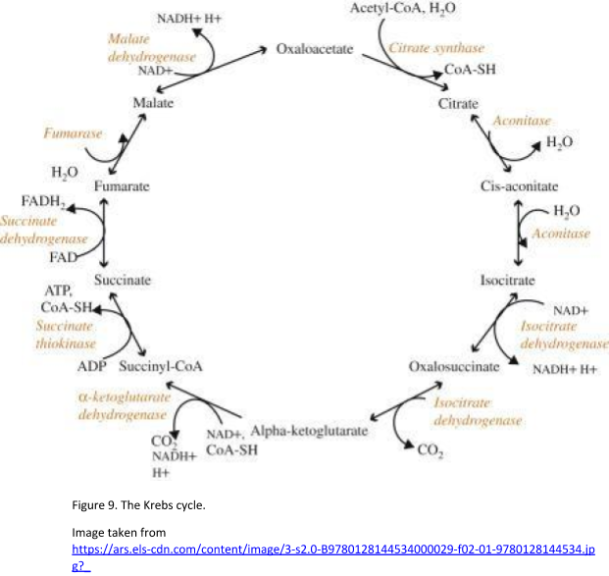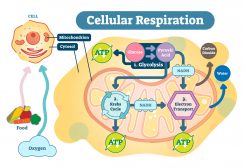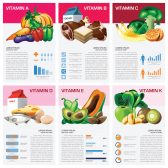
Oxidation
n., plural: oxidations
[ˌɒksɪˈdeɪʃən]
Definition: the process, act, or result of oxidizing
Table of Contents
Oxidation Definition
How do we define oxidation? There are several definitions of the oxidation process. Oxidation can be considered as an addition of an oxygen atom to a compound. The opposite of this process is called the reduction in which there is the removal of an electron.
Look at the figure-1. When Iron ore (Fe2O3) reacts with carbon monoxide (CO), it produces Iron (Fe) and carbon dioxide gas (CO2).
Where is the oxygen added? It is added to CO to produce CO2. Thus, we can say that CO is oxidized. Which oxidized CO? Fe2O3 oxidized CO by giving its oxygen; thus. Fe2O3 is called an “oxidizing agent”.

What did CO do to Fe2O3?
CO reduced Fe2O3 by removing oxygen from it. Thus we can say that CO is a “reducing agent” that reduces Fe2O3 to pure Fe (iron).
Well, the addition or removal of oxygen is one definition of oxidation and reduction, respectively.
Biological oxidation is a biological process that involves the loss of electrons as opposed to the reduction process where there is a gain of electrons. Oxidation and reduction, however, are coupled together as a ‘redox‘ reaction, which is an energy-producing reaction within the cell.
Etymology: from French, from “oxider”, meaning “to oxidize”, from oxide. Variant: oxidization. Compare: reduction.
There is a more robust definition of these processes:
Oxidation is defined as a process in which an electron is removed from a molecule during a chemical reaction.
What happens in oxidation? During oxidation, there is a transfer of electrons. In other words, during oxidation, there is a loss of electrons. There is an opposite process of oxidation known as a reduction in which there is a gain of electrons.
Let’s understand the oxidation chemistry by observing the reaction below:
CuO + Mg → MgO + Cu
In the above reaction, the Mg ion loses electrons to form magnesium oxide. Similarly, CuO gains an electron to become pure Cu (copper).
Oxidation takes place as a molecule, atom, or ion raises its oxidation state. The reverse mechanism is known as reduction, which happens as the electron gain or the oxidation state of the atom, molecule, or ion reduces.
Another good example is that hydrofluoric acid is formed by the reaction of hydrogen and fluorine gas:
H2 + F2 → 2HF
The above reaction oxidizes hydrogen and reduces fluorine. If two half-reactions are described, the reaction can be best understood.
H2 → 2H+ + 2e-
F2 + 2e- → 2F-

Oxidation involving oxygen
Oxygen has been added to a compound as an older method of oxidation. That was because the first understood oxidizing agent was oxygen gas (O2). Although oxygen is typically added to a compound in compliance with the loss of electron requirement and an oxidation state increase, the oxidation concept has been expanded to incorporate additional chemical reactions.
The old oxidation concept of iron in combination with oxygen to produce iron oxide is a classic example of an oxidation reaction. The iron oxidized in rust. The chemical reaction is the following:
2Fe + O2 → Fe2O3
Iron oxide is formed known as rust through the oxidation of iron oxide.
Oxidation involving hydrogen
Oxidation involving oxygen is the modern meaning of the term oxidation. Also, there is another description of hydrogen that can be used in organic chemistry. This is the reverse of the concept of oxygen, and can thus create confusion. It’s still nice to be mindful about it. Oxidation is the loss of hydrogen, according to the description, whereas the reduction, in hydrogen gain.
An example of this is when ethanol is formed by oxidizing ethanol.
CH3CH2OH → CH3CHO
Ethanol is known to be oxidized by the loss of hydrogen. By reversing the equation and adding hydrogen to ethanol, ethanol can be reduced.
“Oil rig” chemistry
The oil rig can be used to understand the modern concept of oxidation and reduction. It deals with electrons only and not oxygen or hydrogen. It is a simple technique to recognize and remember which element is oxidized and which one is reduced. The Oil rig stands for Oxidation Is Loss, Reduction is gain of electrons.
This is a convenient abbreviation to represent the term electron loss or gain. An atom becomes an ion if it gains or loses an electron. The term used to explain this mechanism rests on whether an atom has lost (oxidation) or gained (reduction) an electron.
For example, if a hydrogen (H) atom loses an electron it becomes a positively charged ion (H+). So, it can be said that the hydrogen atom has oxidized and an oxidation reaction took place. Conversely, if a chlorine (Cl) atom gains an electron, it becomes a negatively charged ion (Cl–). Therefore, the chlorine atom is said to be reduced and the reduction reaction occurred.
Oxidation Process
Oxidation and reduction processes take place at the same time and cannot be carried out independently. The individual reactions of oxidation and reduction are taken as half-reactions, subsequently, two half-reactions combine to form a full reaction. The electrons gained or lost are explicitly used such that the half-reaction with the electric charge is balanced. The combination of these half-reactions to form a net chemical equation tends to cancel out the electrons.
Oxidizing and reducing agents
The reducing agent passes electrons into the oxidant during the redox process. In the reaction, thus, electrons are lost and oxidized by the reduction agent, while it is reduced by gaining electrons by the oxidizing agent.
Oxidizers
Oxidizers are substances that have the potential to lose electrons from another substance are considered oxidizing or oxidative and are called oxidizing agents. In other words, the oxidizing agent eliminates electrons from another material and is, thus, reduced. The oxidizing agent can also be termed as an electron acceptor because it accepts an electron. The high oxidation state chemicals like H2O2, MnO–4, or highly electronegative elements like O2, F2 are good examples of oxidizing agents.
Reducers
Reducers are those substances that have the potential to reduce other substances making them gain electrons are considered reductive or reducing and are called ”reducing agents”. They get themselves oxidized and transfer electrons to other substances. Furthermore, the reducing agent is also known as an electron donor as it donates an electron to another substance. Sodium, magnesium, iron, etc., which are electropositive metals, are good examples of reducing agents.
Oxidation-Reduction Reactions (Redox Reactions)
Let us now understand the concept of redox reactions and major types.
What is a redox reaction?
An oxidation-reduction reaction, also known as redox reaction is one in which the oxidation number of involved atoms is changed. The concept encompasses a wide variety of processes. Many reductions and oxidation reactions are as natural as combustion, metal rusting and dissolution, fruit browning and respiration, and photosynthesis, which is the essential mechanism of life.
Major Classifications
Redox processes mostly require the transfer of oxygen and hydrogen atoms, or electrons. All three processes share two essential features: Firstly, they are coupled, which means an oxidation reaction is followed by a reciprocal reduction reaction. Secondly, a net chemical change is involved, which means the transition of an electron or atom taking place from one substance to another.
In redox reactions examples of the three typical forms of redox reactions are given below, reciprocity and net shift are well described.
Oxygen-atom transfer
The reaction between carbon and mercury oxides takes place to form carbon dioxide and mercury metal. The bonding capacity of mercury oxide is considered to be +2 and a change in oxidation state can be seen below.
C + 2HgO → CO2 + Hg
Carbon is oxidized as it receives oxygen; in mercury, oxide-oxygen is removed and reduced complementarity. The net change includes a shift from mercury oxide units with two oxygen atoms to a carbon atom.
Hydrogen-atom transfer
In the following reaction, hydrogen atoms are transferred to oxygen from hydrazine, a compound of nitrogen and hydrogen:
N2H4 + O2 → N2 + 2H2O
Hydrazine is oxidized to molecular nitrogen, loses hydrogen, whereas oxygen is reduced to water, gaining hydrogen.
Electron transfer
The zinc metal and copper ion react in the solution of water creating copper metal and an aqueous zinc ion.
Zn + Cu2+ → Zn2+ + Cu[a]
The zinc metal is oxidized when its two electrons transfer and become an aqueous zinc ion. Furthermore, the copper ion gained electrons and was reduced to copper metal. The transfer of two electrons is the net change that zinc lost and copper gained.
Stoichiometric basis
No information on the mechanism by which change occurs can be obtained when redox processes are defined as above. An overall explanation is known as the reaction stoichiometry, which gives the combining elements and compounds characteristic proportions. Reactions are known as stoichiometric redox and nonredox; stoichiometric groups include an oxygen atom, hydrogen atom, and electron transfer.
Oxidation-state change
The new theory of molecular structure has made complete descriptions of oxidation and reduction possible. Each atom contains a positive nucleus surrounded by negative electrons that define each element’s bonding characteristics. Atoms donate, gain, or exchange electrons when developing chemical bonds. This allows the assignment of each atom an oxidation number, determining the number of the electrons which can form bonds with other atoms. The bonding trend inside a molecule is determined by the specific atoms in a molecule and its specified bonding ability, and each atom shall be considered as in a certain oxidation state described as an oxidation number.
Redox processes are characterized as reactions followed by oxidation-state changes: an increase in oxidation of the atom correlates to oxidation; decrease, decrease. The reactions which are followed by oxidation state changes are known as redox processes, in which the oxidation number of an atom increases correlates to oxidation, and a decrease in the oxidation number corresponds to a reduction. An example of an oxidation state of an element is Fe3+, which means iron in an oxidation state of +3.
Oxidation Examples
A very effective oxidizing agent is molecular oxygen, which oxidizes almost all metals and many non-metals directly. These direct oxidations result in normal oxides like lithium, zinc, phosphorus, and sulfur.
- 4Li + O2 → 2Li2O (lithium oxide)
- 2Zn + O2 → 2ZnO (zinc oxide)
- 4P + 5O2 → P4O10 (phosphorous pentoxide)
- S + O2 → SO2 (sulfur dioxide)
What is oxidation in chemistry?
A good example of oxidation in chemistry is metal displacement. In a compound or solution, a metal atom replaced another metal atom. Copper, for instance, is formed when the reaction of zinc metal takes place in a solution of copper (II) sulfate:
Zn(s) + CuSO4 (aq) → ZnSO4 (aq) + Cu(s)
In the above-mentioned redox reaction example, in a solution of copper sulfate, copper (II) ion is displaced by zinc metal, and free copper metal is produced. The reaction is spontaneous and produces 213 kJ per 65 g of zinc since, compared to zinc, the low energy of copper metal is because of bonding through its d-orbitals being partially filled.
The reaction for ionic equation given as:
Zn + Cu2+ → Zn2+ + Cu
As two half-reactions, zinc is oxidized:
Zn → Zn2+ + 2e–
And the copper is reduced:
Cu2+ + 2e– → Cu

Nitrate reduction to nitrogen in the presence of acid known as de-nitrification is another example. The reaction can be written as:
2NO–3 + 10e– + 12H+ → N2 + 6H2O
Hydrocarbon combustion, like internal combustion engines, produces H2O, CO, some partly oxidized sources of CO2 and heat energy. The full oxidation of carbon-containing materials creates CO2.
The oxidation of hydrocarbons in organic chemistry by oxygen forms water and subsequently, alcohol, aldehyde or a carboxylic acid, ketone, and afterward a peroxide.
What is oxidation in biology?
Numerous significant processes require redox reactions. Cellular respiration, for example, is the oxidation of glucose in biology to carbon dioxide and oxygen to water reduction. The cellular respiration equation is summarized as:
C[b]6H[c]12O[d]6 + 6O[e]2 → 6CO[f]2 + 6H[g]2O[h]
The cell respiration mechanism also heavily relies on NAD+ reduction to NADH and the reverse (NADH oxidation to NAD+) reaction. Both photosynthesis and cellular respiration are related; however, in cell respiration photosynthesis is not the reverse of a redox reaction.
6CO2 + 6H2O + light energy → C6H12O6 + 6O2
By redox reactions, biological energy is often collected and released.

Figure 4: Krebs Cycle of cell respiration. Source
Photosynthesis requires carbon dioxide reductions into sugars as well as molecular oxygen oxidation of the water. Water and CO2 are produced by the oxidation of sugars through the respiration reverse reaction. The reduced carbon molecules are being used as intermediate steps to reduce NAD+ (Nicotinamide adenine dinucleotide) to NADH, which then helps create a gradient of protons that activates adenosine triphosphate (ATP) synthesis and retains oxygen reduction. Mitochondria functions are comparable.
Oxidation in geology
Redox reaction is significant in geology along with chemistry and biology. Redox is important for mineral production and mineral mobilization and is significant in certain conditions of deposition. Generally, the color of the rock is the redox state of most minerals. In oxidizing conditions, the rock shapes and renders it red. Then a green or occasionally white appears when a reducing liquid flows through the rock. Reduced fluid can also accompany minerals containing uranium. The uranium deposits and Moqui marbles are famous examples of redox reactions that influence geological processes.
You might be interested to learn more about oxidation as a major geological event that shaped the Earth. Watch the video below. Credit: the European Geosciences Union (EGU).
Try to answer the quiz below and see what you have learned so far about oxidation.
References
- Definitions of Oxidation and Reduction. (2013, October 3). Chemistry LibreTexts. https://chem.libretexts.org/Bookshelves/Analytical_Chemistry/Supplemental_Modules_(Analytical_Chemistry)/Electrochemistry/Redox_Chemistry/Definitions_of_Oxidation_and_Reduction
- MEL Science. (2017, September 26). Biological oxidation: the essence of the process and its forms. MEL Science; MEL Science. https://melscience.com/US-en/articles/biological-oxidation-essence-process-and-its-forms/
- M. Hudlicky, “In Oxidations in Organic Chemistry,” ACS Monograph Series 186; American Chemical Society Washington DC, 1990, 174. – References – Scientific Research Publishing. (2011). Scirp.org. https://www.scirp.org/(S(351jmbntvnsjt1aadkposzje))/reference/ReferencesPapers.aspx?ReferenceID=143239
- Haustein, C., Lerner, K., & Lerner, B. (2014). Oxidation-reduction reaction. The Gale Encyclopaedia of Science. 5th edition. Farmington Hills, MI: Gale Group.
- Schmidt-Rohr, K. (2018). How Batteries Store and Release Energy: Explaining Basic Electrochemistry. Journal of Chemical Education, 95(10), 1801-1810.
- Oxidation-reduction reaction – Electrochemical reactions | Britannica. (2020). In Encyclopædia Britannica. https://www.britannica.com/science/oxidation-reduction-reaction/Electrochemical-reactions#ref49293
- Definitions of oxidation and reduction (redox). (2013). Chemguide.co.uk. http://www.chemguide.co.uk/inorganic/redox/definitions.html
©BiologyOnline.com. Content provided and moderated by BiologyOnline Editors.






